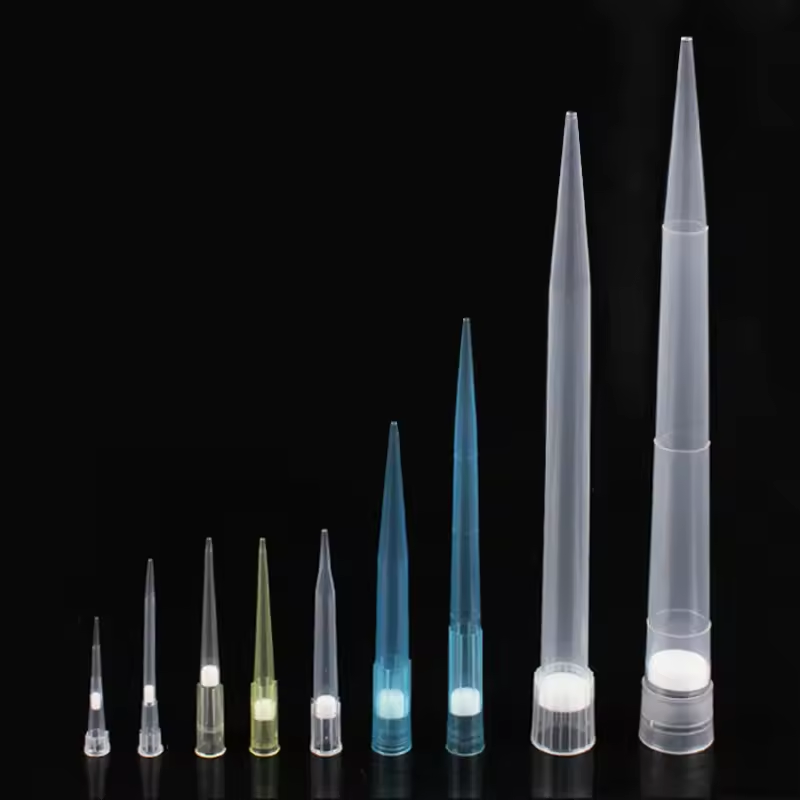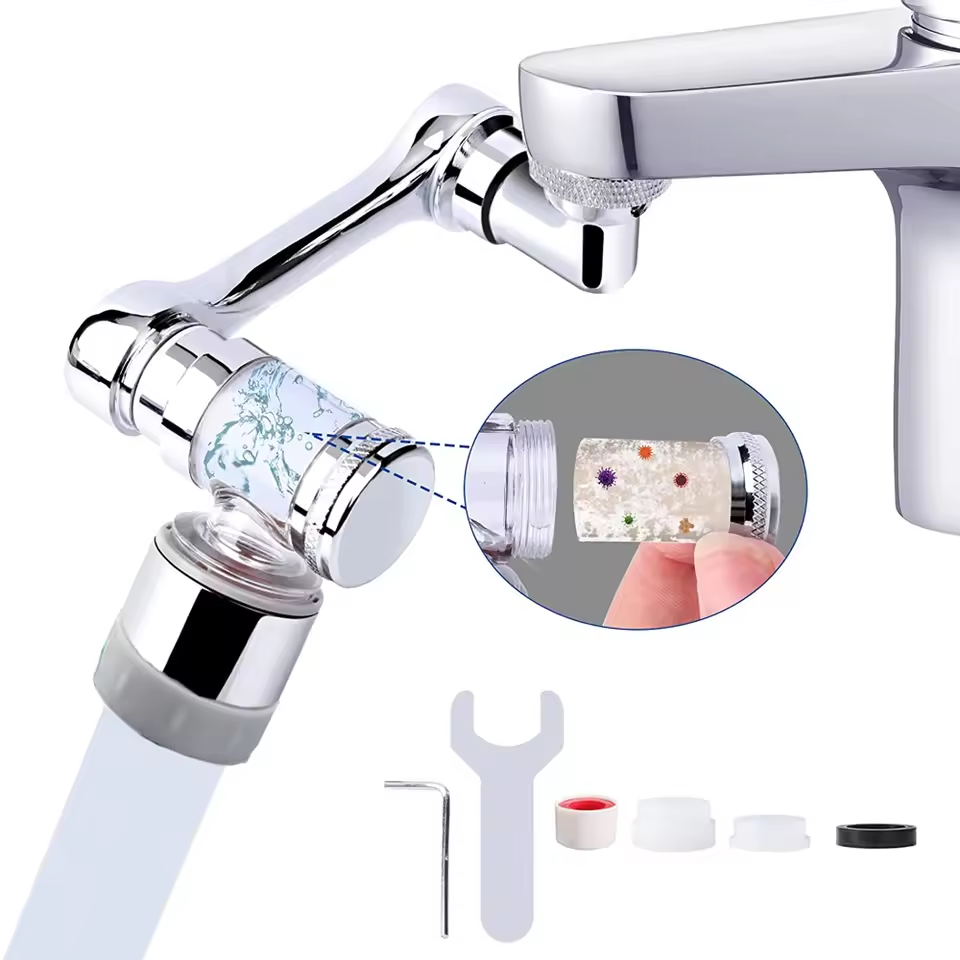What Are Pipettor Filter Tips?
Pipettor filter tips are specialized disposable tools used in laboratories. They are attached to pipettes for precise liquid transfer.

Definition and Anatomy of Filter Tips
Filter tips are pipette tips with built-in filters. These filters prevent contamination between samples and pipettes. The tips are usually made of polypropylene. They have a conical shape and come in different sizes. The integrated filter often consists of hydrophobic material. This design blocks aerosols or liquid contaminants from passing through.
Why They Are Important in Laboratory Work
Filter tips are essential for maintaining sample purity. They prevent cross-contamination and improve experimental accuracy. In molecular biology, for example, even small contaminants can alter results. In clinical research, they ensure reliability and reproducibility of diagnostic outcomes. These tips also reduce aerosol generation, protecting users and maintaining a clean workspace. Their consistent performance is crucial for high-precision experiments.
Types of Pipettor Filter Tips
When selecting pipettor filter tips, understanding their types is crucial. Different options suit distinct lab needs. Here’s a breakdown of common types available:
Sterile vs Non-Sterile Filter Tips
Sterile filter tips are free from bacteria or other contaminants. They are essential in sensitive applications like PCR testing or clinical diagnostics. These tips ensure sample purity and prevent contamination. Non-sterile tips, on the other hand, are suitable for general lab tasks. They work well when sterility isn’t a priority. Choosing between the two depends on your experiment’s requirements.
Low Retention vs Standard Tips
Low retention tips minimize liquid adherence to the tip’s inner walls. They are ideal for viscous samples, ensuring accurate transfer and minimal liquid loss. Standard tips lack anti-adhesion properties but are cost-effective. They are suitable for routine experiments where precision is less critical. Consider low retention tips for improved accuracy in high-stakes research.
Pre-Sterilized and Pre-Filtered Options
Pre-sterilized tips save time by eliminating the need for in-lab sterilization. They offer convenience while maintaining sterility for sensitive experiments. Pre-filtered tips come with built-in protective filters, further preventing contamination. These tips are perfect for aerosol-sensitive workflows. Combining these two options ensures maximum protection and efficiency. Ensure these features align with your lab’s operational needs.
By understanding these categories, you can choose the best pipettor filter tips for your work.
Key Features to Consider When Choosing Filter Tips
Understanding the key features of pipettor filter tips helps ensure optimal performance and reliable results. Consider the following factors when selecting the right filter tips for your laboratory work:
Material and Compatibility with Pipettors
The material of filter tips greatly impacts their performance. Most tips are made of high-quality polypropylene, which is durable and resistant to chemical reactions. A key consideration is ensuring the compatibility of the tips with your pipettor model. Using incompatible tips can lead to inaccurate measurements or even damage to the equipment. Always check the manufacturer’s guidelines for compatibility recommendations.
Filter Quality and Efficiency
The quality of the integrated filter is a critical factor. High-quality filters prevent aerosol-based and liquid contamination effectively. Hydrophobic filters are ideal for sensitive workflows, such as handling volatile or infectious substances. A durable and efficient filter ensures consistent results and protects both the sample and the pipettor.
Volume Range and Accuracy Requirements
Filter tips come in various sizes to accommodate different volume ranges. Choosing the correct tip size ensures precise liquid handling. Smaller tips are suitable for micro-volume tasks, while larger ones work for bulk transfers. For high-precision experiments, prioritize tips that match your accuracy and volume needs. Accurate tips improve reproducibility and reliability in experiments.
By focusing on these features—material, filter quality, and volume options—you can select the best pipettor filter tips for your laboratory applications.
Benefits of Using Filter Tips in the Laboratory
Pipettor filter tips offer several advantages. They enhance the efficiency and accuracy of laboratory work.
Prevention of Cross-Contamination
Filter tips prevent contamination between samples and the pipettor. The integrated filters block aerosols and liquid residues. This ensures that no contaminants mix during liquid transfers. Cross-contamination can compromise results, especially in sensitive experiments. Using filter tips minimizes this risk, protecting the integrity of your research.
Enhanced Sample Integrity and Precision
High-quality filter tips contribute to better experimental accuracy. They reduce sample loss and improve liquid handling precision. This is especially useful in molecular biology and clinical research. Reliable tips are crucial for achieving reproducible and trustworthy results. By maintaining sample purity, these tips ensure your research data remains reliable.
Minimized Risk of Aerosol Formation
Aerosols can pose health risks and contaminate nearby samples. Filter tips block aerosol formation during pipetting. This provides a safer workspace for users. It also prevents airborne contaminants from affecting sensitive workflows. By reducing aerosols, filter tips promote both safety and cleanliness in the lab.
Common Applications of Pipettor Filter Tips
Pipettor filter tips play a vital role in numerous laboratory workflows. Their ability to ensure sample purity, precision, and safety make them indispensable across various scientific fields.
Molecular Biology and PCR Testing
Filter tips are essential for molecular biology experiments. In procedures like PCR testing, contamination can lead to inaccurate results. Aerosols and residual liquids are major contamination sources in these workflows. Pipettor filter tips prevent these issues, ensuring cleaner samples and reproducible results. These tips help maintain integrity in sensitive tasks, such as DNA amplification and gene analysis.
Clinical Diagnostics and Pharmaceutical Research
In clinical diagnostics, filter tips provide reliable and sterile liquid transfer. They are crucial when handling infectious samples or conducting disease analyses. High precision ensures the accuracy of diagnostic tools, like ELISA assays. Pharmaceutical labs use filter tips for developing, testing, and validating drugs. These tips reduce contamination risks, allowing safe and efficient workflows.
Environmental Analysis and Forensic Testing
Filter tips support accurate and contamination-free analysis in environmental and forensic research. In environmental studies, they ensure the purity of water, soil, or chemical samples. Accurate measurements are vital for determining pollutant levels. Forensic labs rely on filter tips for DNA sampling and toxicology tests. Clean sampling with filter tips enhances reliability and credibility in legal cases.
By preventing contamination and enabling precise handling, pipettor filter tips boost the reliability of research in these applications.
Proper Usage and Maintenance of Filter Tips
Proper usage and maintenance of pipettor filter tips ensure optimal performance and extended usability. Attention to detail in handling, storage, and disposal is essential. This section explains best practices.
Correct Techniques for Pipetting
Using correct techniques for pipetting improves accuracy and minimizes contamination risks. Start by firmly attaching the filter tip to the pipettor. Avoid touching the tip with your hands to prevent contamination. Adjust the pipettor settings accurately for the required volume. When dispensing, release the liquid slowly to reduce aerosols. Practice smooth and steady motions for consistent results. Regularly inspect your pipettor and tips to ensure proper functioning.
Storage Practices for Prolonging Usability
Storing filter tips properly protects them from damage and contamination. Keep unused tips in their original packaging until needed. Store them in a clean, dry, and temperature-controlled environment. Avoid exposing tips to dust, moisture, or direct sunlight. Label storage containers for easy identification during workflows. For long-term storage, check the expiration date to ensure usability.
Disposal and Environmental Considerations
Dispose of used filter tips responsibly to maintain a safe lab environment. Separate contaminated tips from general waste. Follow your lab’s disposal protocols for hazardous or bioactive materials. Use designated biohazard containers for infectious waste. Consider environmentally friendly options, like tips made from recyclable materials. Proper disposal prevents environmental harm and ensures compliance with laboratory regulations.
Tips for Buying the Best Pipettor Filter Tips
Selecting the right pipettor filter tips is essential for seamless laboratory performance. Follow these tips to make an informed decision.
Choosing Reputable Brands and Suppliers
Go for brands known for consistent quality and reliability. Established manufacturers ensure high standards in production. Reputable suppliers provide genuine products with proper certifications. Read reviews and customer testimonials before purchasing. Avoid generic or low-cost alternatives that may compromise quality. Choose suppliers offering guarantees and transparent return policies.
Cost vs Performance Analysis
Balance cost and performance when buying filter tips. High-quality tips may cost more initially but add value in the long run. They minimize errors, reduce contamination, and save time in experiments. Avoid low-cost options that may lead to inaccurate results. Calculate how often tips will be used in your lab. Consider cost-effective options for routine or non-critical tasks. For high-stakes applications, prioritize premium tips.
Recommendations for Bulk Purchasing
Bulk purchasing can save money for labs with high tip usage. Buy in large quantities from trusted suppliers to secure discounts. Ensure storage space is available to keep tips in good condition. Check for deals on pre-sterilized and pre-filtered options. Always verify the expiration date when buying in bulk. Bulk buying reduces ordering frequency, improving workflow efficiency. Review lab requirements to avoid over-purchasing unnecessary types or sizes.
By making informed choices, you can ensure the best pipettor filter tips meet your lab’s needs.
Frequently Asked Questions About Pipettor Filter Tips
Can You Reuse Filter Tips?
Reusing pipettor filter tips is not recommended. These tips are designed for single-use applications. Reuse increases the risk of contamination and inaccurate results. The filter inside the tip loses efficiency after use. Single-use ensures sterility and precision in experiments. Always dispose of used tips following safety protocols.
What Makes Filter Tips Different from Regular Tips?
Filter tips have built-in filters, unlike regular pipette tips. These filters block aerosols and contaminants. Regular tips don’t offer this protection and may allow cross-contamination. Filter tips are ideal for sensitive workflows like PCR or clinical diagnostics. They ensure clean and precise liquid handling. Regular tips suit general tasks where contamination risk is low.
How to Ensure Compatibility with Your Pipettor?
Always check manufacturer guidelines for compatibility between pipette tips and pipettors. Look for tips designed specifically for your pipettor model. Using incompatible tips can cause poor fit and inaccurate measurements. Test the tips before use to confirm a secure attachment. Some manufacturers offer tip recommendations for their pipettors.